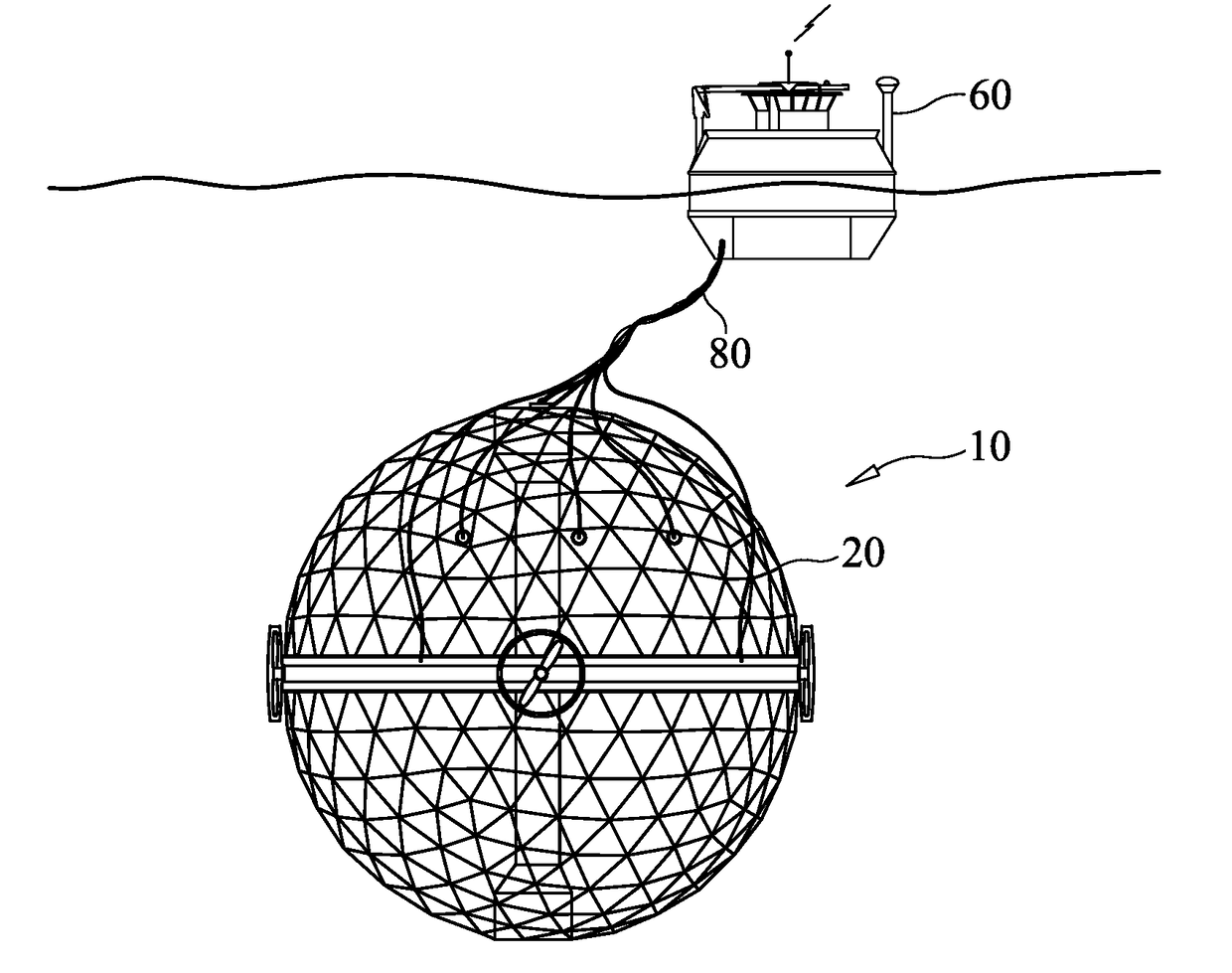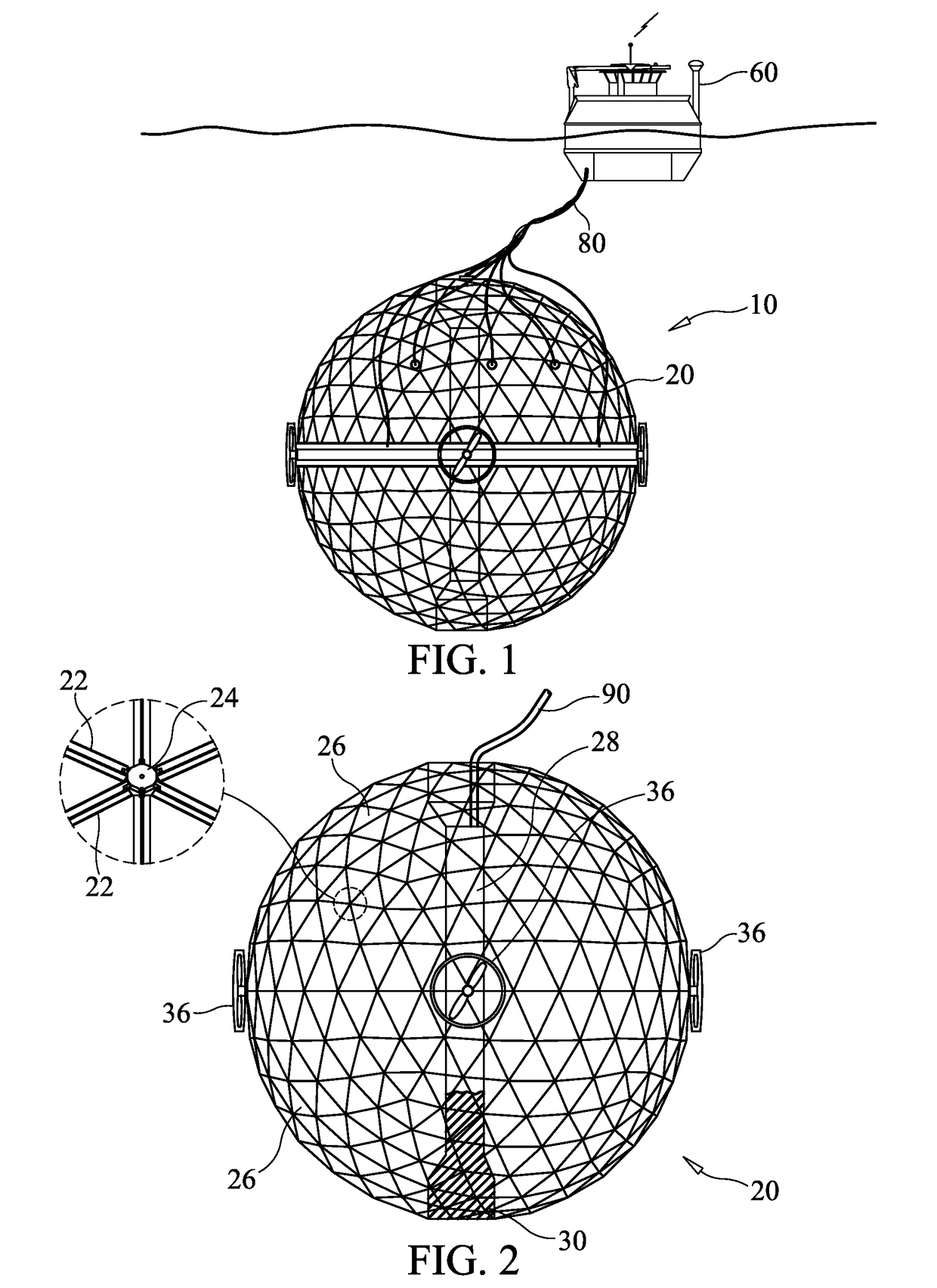Automated open ocean fish farm structures and systems for open ocean fish farming
a technology of open ocean fish farm and automatic operation, applied in pisciculture, aquaria, climate change adaptation, etc., can solve the problems of inability to clean efficiently at sea, contaminated mesh netting, and concentrated concentration, and achieve the effect of reducing surface wave and tide forces
- Summary
- Abstract
- Description
- Claims
- Application Information
AI Technical Summary
Benefits of technology
Problems solved by technology
Method used
Image
Examples
Embodiment Construction
[0044]In the following detailed description of the invention, certain preferred embodiments are illustrated and described in order to provide certain specific examples for implementation of the invention. The preferred examples include certain preferred cage enclosures, autonomous buoys, automated positioning systems, submersible systems and subsystems, food storage and dispersal systems, power generation and propulsion systems, and monitoring systems. However, it will be recognized by one skilled in the art that many other variations and modifications may be made given the disclosed principles of the invention.
[0045]The invention employs the use of cage enclosures in the ocean for containing fish or other marine resource to be grown therein. Examples of such sea cages are known. The operation of this type of cage with a central stem and air chamber for controlling buoyancy for surfacing or submerging, and with mesh netting on its outer boundaries for containing the fish, is also we...
PUM
 Login to View More
Login to View More Abstract
Description
Claims
Application Information
 Login to View More
Login to View More - R&D
- Intellectual Property
- Life Sciences
- Materials
- Tech Scout
- Unparalleled Data Quality
- Higher Quality Content
- 60% Fewer Hallucinations
Browse by: Latest US Patents, China's latest patents, Technical Efficacy Thesaurus, Application Domain, Technology Topic, Popular Technical Reports.
© 2025 PatSnap. All rights reserved.Legal|Privacy policy|Modern Slavery Act Transparency Statement|Sitemap|About US| Contact US: help@patsnap.com



